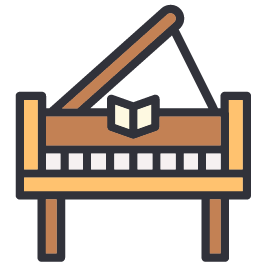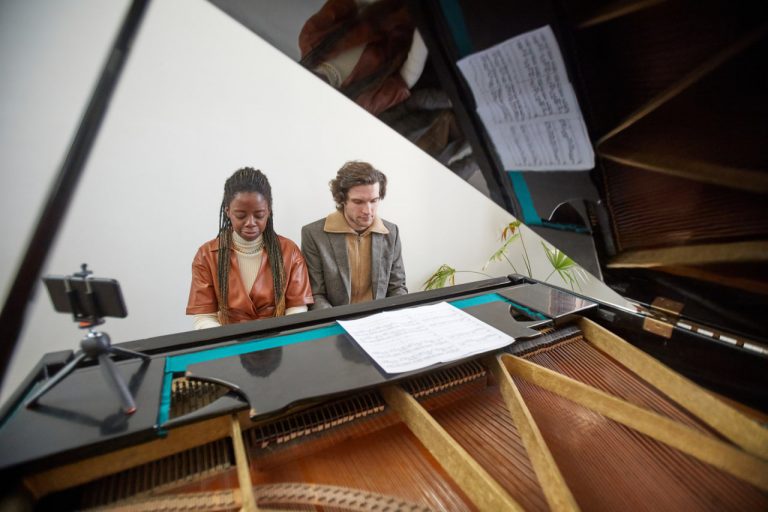Learning to read piano notes is the first big step toward becoming a confident player. At first, the sheet music may look like a puzzle full of lines, dots, and strange symbols, but once you understand the system, it becomes a language you can read with ease. This guide will walk you through the basics step by step, so you can begin to recognize notes and play simple pieces on your own.
The Staff and Clefs
Music is written on a set of five horizontal lines called the staff. Each line and space represents a different pitch. To help you know which notes are which, a clef symbol is placed at the beginning of the staff.
For piano, two clefs are used together: the treble clef and the bass clef. The treble clef, sometimes called the G clef, usually shows notes for the right hand and higher sounds. The bass clef, or F clef, shows notes for the left hand and lower sounds. Together, these two staves form the grand staff, which is the standard way piano music is written.
Line and Space Notes in the Treble Clef
In the treble clef, the lines from bottom to top represent the notes E, G, B, D, and F. A common memory aid is “Every Good Boy Deserves Fun.”
The spaces between those lines represent the notes F, A, C, and E, which conveniently spell the word FACE.
Line and Space Notes in the Bass Clef
In the bass clef, the lines from bottom to top represent the notes G, B, D, F, and A. A helpful way to remember this is “Good Boys Do Fine Always.”
The spaces between those lines represent the notes A, C, E, and G, often remembered as “All Cows Eat Grass.”
Middle C and Connecting the Staves
One of the most important notes to recognize is Middle C. It sits on a short line called a ledger line between the treble and bass clefs. This note connects the two staves and acts as a central reference point for reading music.
Middle C is usually played with the right hand thumb or the left hand little finger, depending on the piece, but most importantly it shows you how the treble and bass notes connect.
Rhythm Basics: Note Values
Reading piano notes is not only about knowing which pitch to play, but also how long to hold it. Notes have different shapes to show their duration.
- A whole note is an open oval with no stem and lasts four beats.
- A half note looks similar but has a stem and lasts two beats.
- A quarter note is a filled oval with a stem and lasts one beat.
- Eighth notes have a flag or a beam connecting them and last half a beat each.
As you read music, you will count these note values to stay in rhythm.
Practice Tips for Learning Notes
When you begin, focus on small sections at a time. Start by memorizing the lines and spaces of the treble clef, then do the same for the bass clef. Flashcards, apps, or writing notes on blank staff paper can help reinforce your memory.
Practice finding Middle C on both the page and the keyboard, since it serves as your anchor point. Gradually, connect new notes by moving step by step up or down the staff.
Finally, combine pitch reading with rhythm practice by clapping out rhythms before you play them on the piano. This strengthens both parts of music reading at the same time.
Bringing It All Together
Reading piano notes takes time and repetition, but once you know the staff, clefs, and note values, you will be able to translate written music into sound. Start slowly, learn one element at a time, and keep practicing consistently. Before long, you’ll find yourself reading notes more naturally and enjoying the freedom of playing directly from sheet music.



